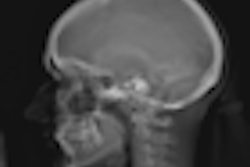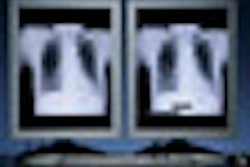An American Heart Association (AHA) report in the current issue of Circulation offers new recommendations for cardiac imaging that uses ionizing radiation, including coronary CT angiography (CTA). The new science advisory states that coronary CTA use should be restricted due to uncertainty regarding the health effects of the radiation delivered by the exam.
The report in the February 24 edition of Circulation (published online February 3) warns that in the absence of reliable information about the risks of coronary CTA, providers should limit all heart studies involving radiation to patients with symptoms such as chest pain who are not at low risk for heart disease.
The advisory was produced by the writing group of the AHA Committee on Cardiac Imaging of the Council on Clinical Cardiology and the Committee on Cardiovascular Imaging and Intervention of the Council on Cardiovascular Radiology and Intervention.
According to the report, the main barometer of risk, effective dose, is not a strict guide to the risks of ionizing radiation, but rather "a calculated indicator that provides a rough estimate of relative risk based on evolving knowledge of radiation biology and radiation epidemiology," wrote lead author Dr. Thomas Gerber, Ph.D., from the Mayo Clinic in Jacksonville, FL, and colleagues.
Effective dose cannot be an exact indicator of risk in an individual because generic modeling of the human body in Monte Carlo simulations cannot account for the many variations of human anatomy, and because of uncertainties regarding the sensitivity of organs and tissues to radiation, the authors wrote.
Despite uncertainties with regard to the risk of malignancies as well as the accuracy of radiation dose estimates, the authors stated that they "support the concept of keeping patient doses as low as reasonably achievable but consistent with obtaining the desired medical information."
The AHA science advisory recommends the following:
- Physician education should emphasize that cardiac imaging studies that expose patients to radiation should be ordered only after careful consideration of the potential benefit to the patient and the risks associated with not performing the exam, in keeping with established appropriateness criteria.
- Records from all of a patient's healthcare providers should be reviewed to ensure that imaging studies involving radiation are not repeated needlessly.
- Routine surveillance with either radionuclide stress tests or cardiac CT exams is not recommended in asymptomatic patients with a low risk of ischemic heart disease.
- When an exam using ionizing radiation is deemed necessary, "every effort should be made to reduce patient dose while balancing image noise and quality sufficient for confident interpretation," they wrote.
- Longitudinal tracking of an individual's cumulative lifetime dose for patients is not practical at this time.
- Imaging experts and manufacturers should continue working on developing consistent radiation output metrics for cardiac exams that use radiation.
- The imaging community should work to establish diagnostic reference levels for radiation doses of different cardiac imaging procedures, for eventual use in benchmarks that will enable comparisons between practices and across the U.S.
Comment from a coronary CTA provider
Commenting on the new guidelines in an e-mail to AuntMinnie.com, radiologist Dr. David Dowe from Atlantic Medical Imaging in Galloway, NJ, said that the AHA statement's stated dose range of 2 to 4 mSv for prospectively gated coronary CTA is reasonable.
Caution is always advised when using radiation, and the cost/benefit analysis should always be in the patient's favor if he or she is going to be scanned, Dowe wrote.
"Should we scan all patients with no risk factors, i.e., do a true screening study akin to colonoscopy every five years? The answer now is no, but I believe we will definitely end up there," Dowe wrote.
When Dowe decides to scan patients younger than 40 years of age (males) and younger than 50 years of age (females) who are asymptomatic, it is because they are an intermediate- to high-risk patient by Framingham risk scores. The coronary CTA is done to determine whether they have coronary artery disease, and the findings almost always affect their current healthcare, Dowe said.
One unanswered question: If coronary CTA reveals plaque, should a patient, regardless of risk factors, go on statins for life?
"If yes, then there is really no need ever for a follow-up exam unless they become symptomatic or a new drug that could replace their statins comes along," Dowe wrote. "Maybe coronary CTA if positive is a once-in-a-lifetime scan, or if negative a once-in-five-to-10-years scan. When you look at it that way, the radiation dose is minimal over a lifetime."
By Eric Barnes
AuntMinnie.com staff writer
February 3, 2009
Related Reading
JAMA study finds wide variation in cardiac CTA dose, February 3, 2009
Framingham risk doesn't predict plaque burden, January 5, 2009
Coronary CTA identifies ACS patients ready for ED discharge, December 9, 2008
CT angiography aids risk stratification in patients with chest pain, November 3, 2008
Multislice CT identifies coronary atherosclerosis in 'low-risk' patients, September 4, 2008
Copyright © 2009 AuntMinnie.com



















